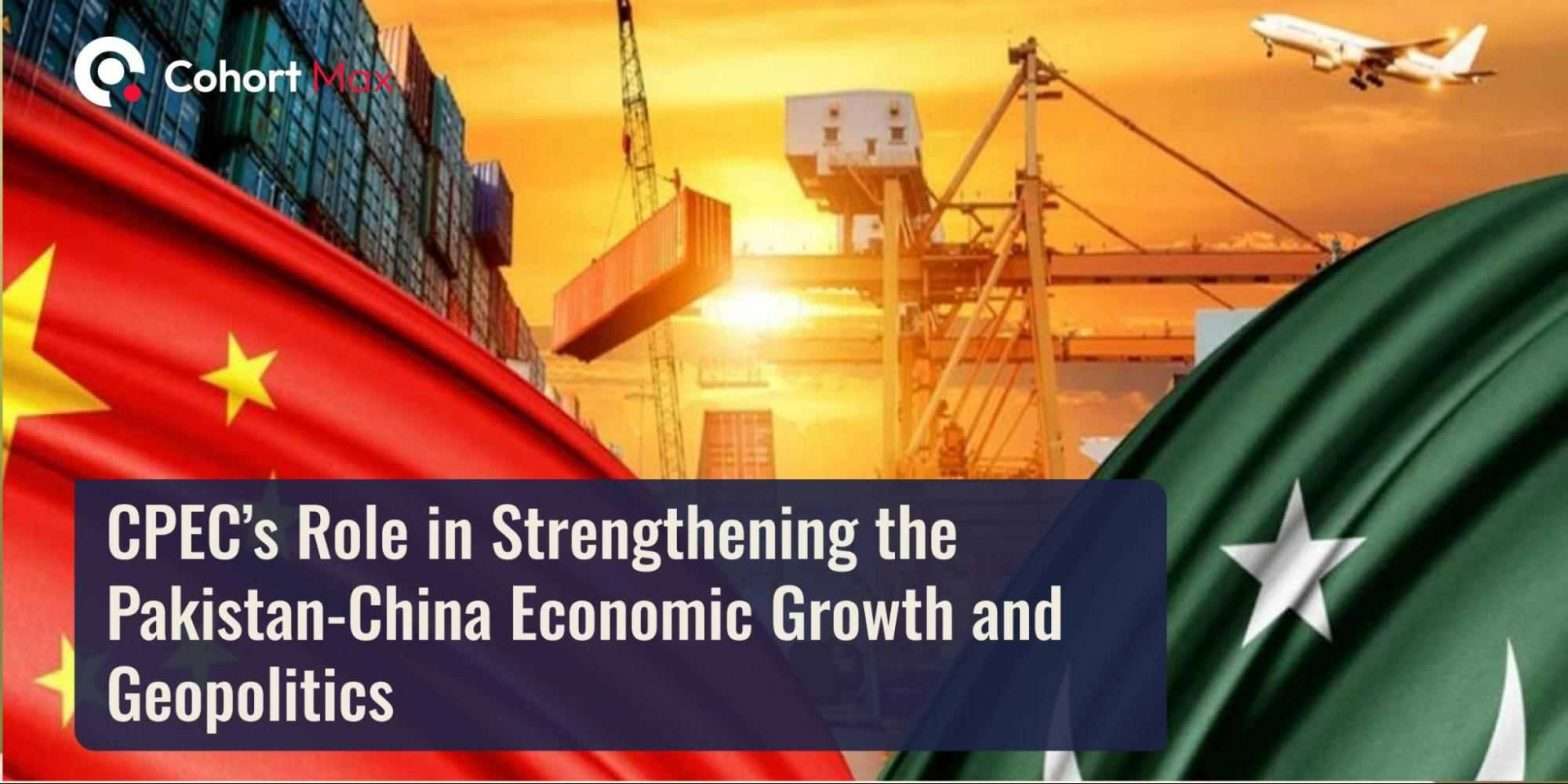CPEC’s Role in Strengthening the Pakistan-China Economic Growth and Geopolitics
| The Pakistan-China partnership, strengthened by CPEC, drives Pakistan’s economic growth through infrastructure and energy projects with promising future potential. |
Pakistan and China share a deep-rooted friendship that has grown stronger over the decades. Established in 1951, this relationship has evolved into what both countries proudly call an “All-Weather Strategic Cooperative Partnership.” The term signifies the unwavering cooperation between these two nations, irrespective of global challenges or changing political landscapes. At the heart of this bond is the China-Pakistan Economic Corridor (CPEC), a monumental project that has become a symbol of their shared vision for prosperity and development.
The Foundation of Trust and Support
The Pakistan-China relationship is built on a solid foundation of mutual trust, respect, and shared interests. Over the years, both countries have consistently supported each other on international platforms, advocating for each other’s national interests. This unwavering support has fostered a strong sense of trust, creating a unique partnership that goes beyond mere diplomacy. Their cooperation is not limited to economic ventures; it extends to political, military, and cultural exchanges, making their bond multifaceted and resilient.
| A Turkish company’s bid to manage operations at Islamabad International Airport has been approved, marking a significant step in outsourcing the airport’s services. |
CPEC: The Backbone of Economic Cooperation
Launched in 2013, the China-Pakistan Economic Corridor (CPEC) is one of the most significant initiatives in the history of Pakistan-China relations. This project is part of China’s larger Belt and Road Initiative (BRI) and aims to transform Pakistan’s infrastructure while enhancing its economic capabilities. CPEC is essentially a massive infrastructure and investment project that connects Pakistan with China, promoting trade, investment, and regional cooperation.
CPEC has proven to be a game-changer for Pakistan’s economy, bringing in billions of dollars in Chinese investment and creating numerous development opportunities. The project’s focus areas include energy, infrastructure, industrial development, and the strategic development of the Gwadar Port, positioning Pakistan as a key player in regional trade.
Major Components of CPEC
Energy Projects: Powering Pakistan’s Future
One of the most immediate benefits of CPEC has been its focus on resolving Pakistan’s chronic energy shortages. CPEC has financed the construction of several energy projects, including coal-fired, hydroelectric, and solar power plants. These projects have added significant capacity to Pakistan’s national grid, reducing power outages and ensuring a more reliable energy supply. By addressing Pakistan’s energy crisis, these initiatives are helping to boost industrial productivity and improve the quality of life for ordinary citizens.
Infrastructure Development: Roads, Railways, and Connectivity
CPEC has also heavily invested in infrastructure development. Roads, highways, and railways have been built or upgraded under the project, significantly improving transportation networks nationwide. This enhanced connectivity not only benefits trade within Pakistan but also strengthens Pakistan’s ties with neighboring countries, making it a central hub for regional trade.
These improvements in infrastructure are key to unlocking Pakistan’s economic potential. Better roads and rail networks make it easier for businesses to transport goods and services, encouraging domestic commerce and attracting foreign investment.
Gwadar Port: The Jewel in the Crown
One of the most strategic components of CPEC is the development of Gwadar Port. Located on the Arabian Sea, Gwadar is set to become a major trade hub for the region. Its strategic location near the Persian Gulf gives it access to some of the world’s most important shipping lanes. As CPEC develops, Gwadar Port is expected to attract international investors and traders, boosting economic activity not just in Pakistan but across the region.
The development of Gwadar has the potential to make Pakistan a key player in global trade, connecting markets in Asia, the Middle East, and beyond.
Special Economic Zones: A Hub for Industry
CPEC has also led to the creation of several Special Economic Zones (SEZs) across Pakistan. These SEZs are designed to attract foreign investment by offering incentives such as tax breaks and simplified regulations. By promoting industrial development, the SEZs aim to create jobs, boost exports, and enhance Pakistan’s manufacturing capabilities. This industrial development is crucial for Pakistan’s long-term economic growth, providing opportunities for innovation, entrepreneurship, and skill development.
More Suggestions: GITEX GaLOBAL 2024
Challenges on the Road to Success
While CPEC has undoubtedly brought significant benefits to Pakistan, it has also faced its share of challenges. Some critics have raised concerns about the debt burden that comes with large-scale infrastructure projects, as Pakistan borrows heavily to fund these initiatives. There are also environmental concerns, particularly regarding the construction of coal-fired power plants, which could contribute to air pollution and climate change.
Another challenge is ensuring that CPEC projects benefit the local population. There have been concerns that Chinese companies are employing Chinese workers for construction and development, limiting job opportunities for Pakistanis. Both Pakistan and China are aware of these issues and have been working to address them, emphasizing transparency and collaboration to ensure the long-term success of CPEC.
A Promising Future: The Road Ahead for CPEC
Despite these challenges, the future of CPEC looks bright. As the project progresses, it is expected to continue driving Pakistan’s economic growth, creating jobs, and improving infrastructure. For Pakistan, CPEC represents a once-in-a-lifetime opportunity to develop its economy, reduce poverty, and improve living standards.
Effective governance and transparent decision-making will ensure that CPEC’s benefits are widely shared. The project’s success will depend on the ability of both Pakistan and China to manage its complexities, address concerns, and maintain a focus on sustainable development.
A Model of Cooperation and Friendship
The relationship between Pakistan and China is a shining example of how two nations can forge a deep, lasting partnership based on mutual trust and shared interests. From political alliances to massive infrastructure projects like CPEC, the cooperation between these two countries is a testament to their commitment to each other’s prosperity and development.
CPEC, in particular, stands as a beacon of hope for Pakistan’s future. By enhancing connectivity, boosting economic growth, and improving infrastructure, CPEC is set to transform Pakistan’s economic landscape for generations to come. As Pakistan and China deepen their ties, their relationship will remain a powerful example of international cooperation in an increasingly interconnected world.
More Articles: Pakistan’s First Multi-Mission Satellite is Now Operational







